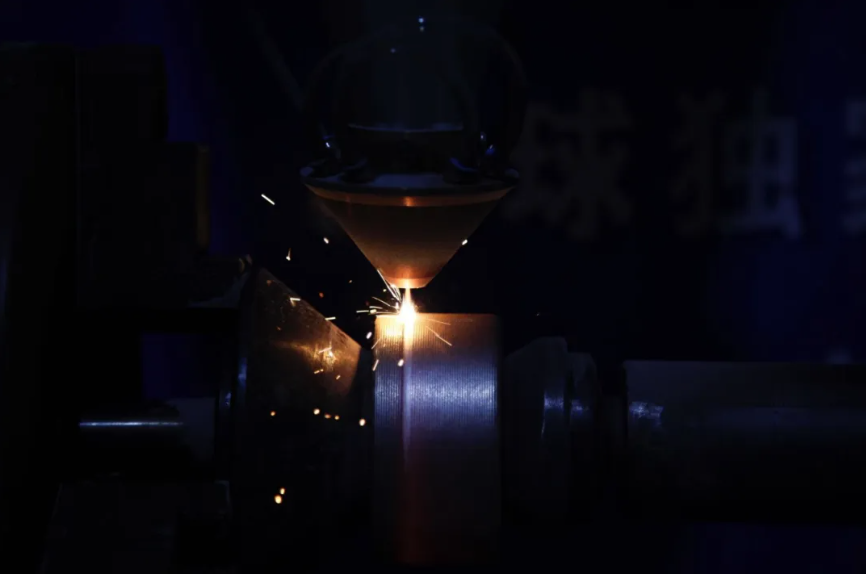The latest cleaning applications for the Raycus P1000H
As an emerging application of laser in recent years, laser cleaning has gradually replaced the traditional cleaning process in many industrial fields, showing broad prospects for development of its high efficiency, no harm to the substrate, high economic benefits, and many other advantages. However, the development of domestic lasers as a whole needs to catch up to some foreign brands, and many applications are monopolized by foreign countries, which seriously limits the development of the domestic laser cleaning industry. With the leading fiber laser companies represented by Raycus Laser continuously developing new products in recent years, this situation has been continuously improved, laying a solid foundation for laser cleaning technology to go further into the market. The flag series P1000H pulsed laser is the heavyweight high-end cleaning laser product launched by Raycus Laser on the occasion of its 15th anniversary, and its performance in cleaning applications is very impressive.
Below are a few laser cleaning applications in which Raycus flag series P1000H has performed well.
1. Raycus P1000H cleans blue paint and blue film on the surface of battery boxes.
During the production process of power batteries, the blue paint or blue film on the surface will be uneven, and there will be bubbles and folds in some areas, etc. For these unqualified products, it is necessary to clean off the blue paint or blue film on the surface of the battery box and reprocess it.
Figure 1 shows the effect of cleaning the blue paint on the surface of the battery box by laser ablation and vaporization with Raycus flag series P1000H pulsed laser. The cleaned surface of the battery box is free of residue and damage, and the cleaning efficiency is up to 1600mm2/s, which can satisfy customers' practical application requirements to a high degree. For the blue film, if the laser ablation vaporization cleaning method is still used, the cleaning process will make it difficult to collect the flocculent, in addition, the battery box surface temperature will be higher, so this is not the preferred cleaning method. Instead, laser treatment of the blue film so that it loses its adhesion, and then with the hand tearing method is more reasonable. During the cleaning process, the laser quickly processes the blue film on the surface of the battery box, under the action of the laser, the blue film on the surface will lose its viscosity to a certain extent, and then it is easy to clean it by hand tearing, the effect is as shown in Fig. 2, and the efficiency of the cleaning can be up to 3800 mm2/s.
2. Cleaning of the inner wall of tires with the Raycus Flag P1000H
During the production of quiet tires and self-sealing tires, especially when applying quiet components or self-sealing materials to the inner wall of the tire, it is necessary to clean the inner wall of the tire to prevent residues from the previous process from affecting the coating quality of the quiet components or self-sealing materials.
Taking a tire with a diameter of 290mm as an example, the effect of cleaning the inner wall of the tire with Raycus Flag Series P1000H pulsed laser is shown in Fig. 3, with Fig. 3(a) and Fig. 3(b) showing the shape of the tire before and after the cleaning, and the inset in Fig. 3(b) showing the Dainesealer test chart. The test results are as follows: the coefficient of friction of the inner surface was below 35 mN/m in the first cleaning (50 s), between 35 mN/m-38 mN/m in the second cleaning (102 s), and above 38 mN/m in the third cleaning (154 s). The overall cleaning effect is good, and the cleaning speed meets the customer's requirements.
3. Cleaning of flat copper wire windings for the Raycus Flag P1000H
Electric motors are one of the core parts of new energy-powered vehicles. The flat copper stator windings inside them are insulated and electrically isolated, usually with a layer of lacquer or an organic insulating layer, which needs to be effectively removed from the welding area before welding.
Raycus flag series P1000H and P500MX can both fulfill this cleaning task excellently, but the two lasers are in different states after cleaning, so customers can choose different lasers according to their needs. Figure 4 is the comparison picture of the two lasers after cleaning, Figure 4(a) is the effect of Flag Series P1000H after cleaning, and Figure 4(b) is the effect of P500MX after cleaning. There is a layer of oxidized layer on the surface of flat copper wire after cleaning the Flag Series P1000H laser, which will not be oxidized and discolored again during storage and transportation. While P500MX and other MOPA lasers have no oxide layer on the surface of the flat copper wire after cleaning, the color is whitish, and from the feedback of the market, the flat copper wire after cleaning may be oxidized and blackened in the process of storage and transportation. When customers need to store and transport for a long time, the flag series P1000H is the preferred laser.
In addition to the three latest applications introduced above, Raycus Flag Series P1000H pulsed lasers can also be used in the fields of mold cleaning, carbon fiber plate cleaning, aircraft skin cleaning, and so on. In the future, Raycus will continue to combine the market demand for application process research, improve and innovate the laser cleaning process technology, and further promote the development of the domestic laser cleaning industry.







Comments
Post a Comment